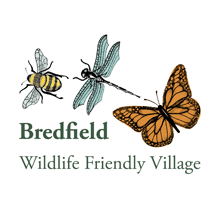“Gosh, that looks just like …. “: a bee, a leaf, a flower, a stick, or something else. “But, it’s not!” Sometimes, nature can deceive you into thinking you are seeing something else, or not seeing anything at all.
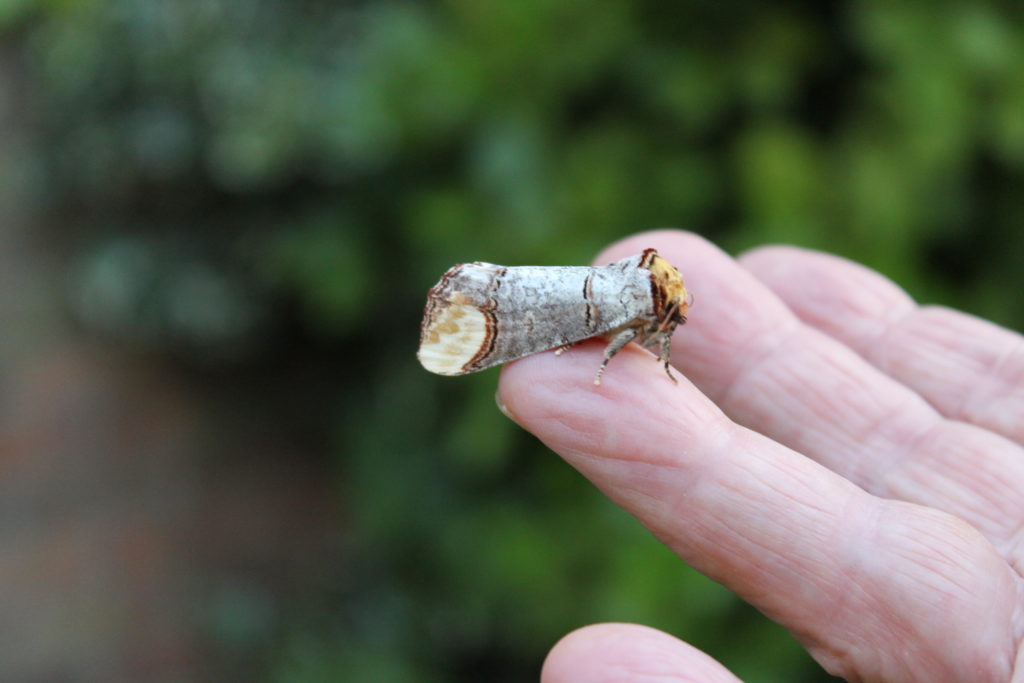
A moth, sat on a branch, may blend in so well with the branch, that you walk past without noticing it. The moth hopes that foraging birds or other predators will, similarly, not notice it. This is camouflage. It is for good reason that so many birds are ‘little brown jobs’. Most of the time, they want to be as inconspicuous as possible. Some caterpillars are hairy and showy, with a “don’t dare eat me – you’ll regret it” look, but some have highly cryptic camouflage and take some finding, even when you’re looking at them. Can you find the Orange-wing butterfly caterpillar in this photo?
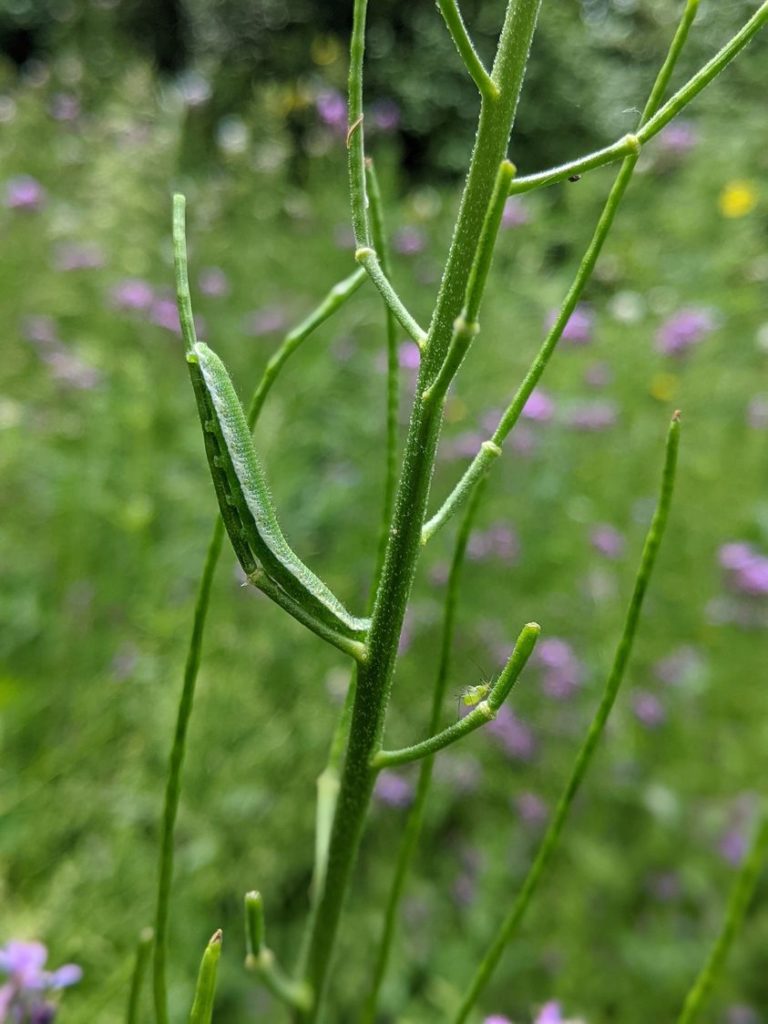
Moths are particularly good at camouflage. How many moths can you find on this branch?
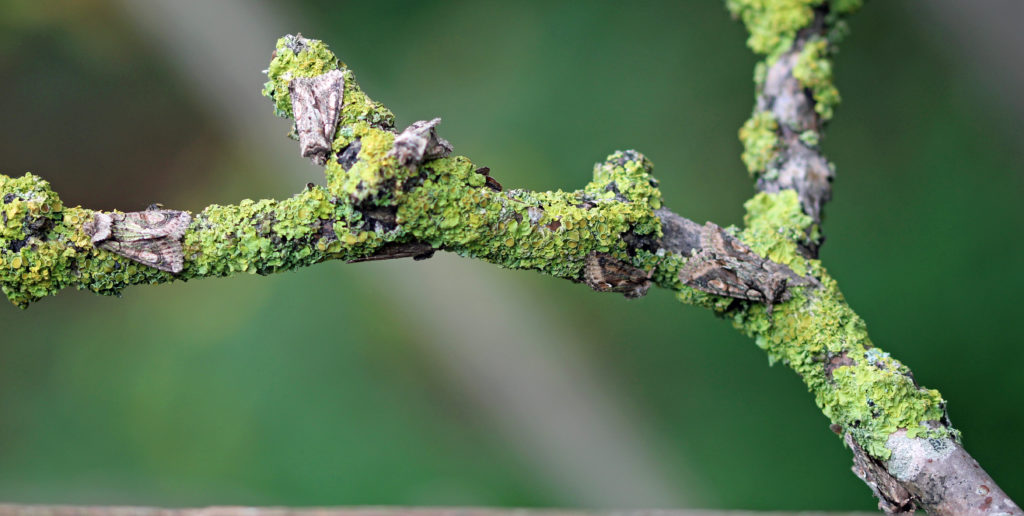
Sometimes, it is the predator that is camouflaged: waiting to pounce on some unsuspecting prey. A Tiger’s stripes are camouflage, but you don’t have to travel to exotic locations to see camouflaged predators at work. If you have Oxeye Daisies in your garden, close inspection might reveal a small pale spider sat there, blending into colours of the flower. It’s a Crab Spider and it’s a killer: sat, patiently waiting for a bee or a fly to land.
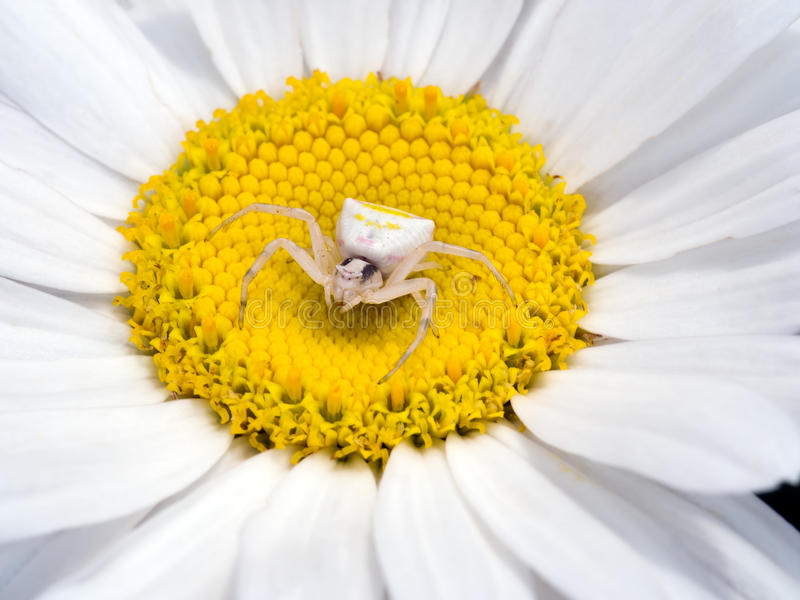
Sometimes, you will certainly notice something, but are misled into thinking it is something else. The bumblebee sat on your flowers, may not be a bee at all, but a fly. Hoverflies are often mistaken for bees, and some make a deliberate and particularly good attempt at disguising themselves as bees. This is mimicry.
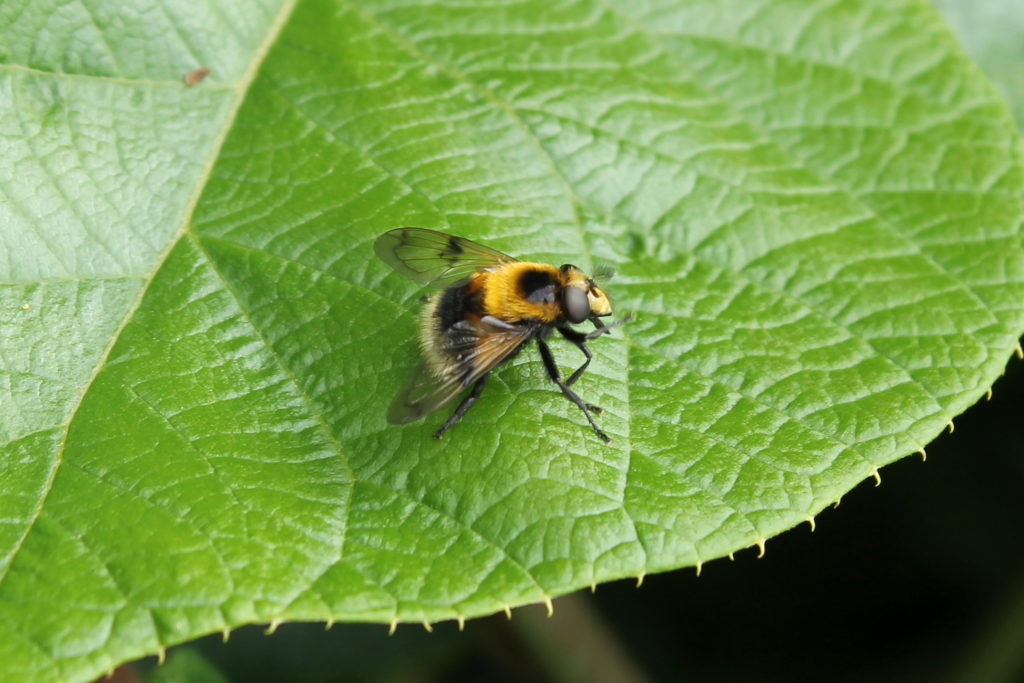
Top score for bee mimicry goes to the appropriately named Bumblebee Hoverfly. This fly, like many other mimics in the natural world is intent on nefarious deeds. Unnoticed for what is it, the female will enter a Bumblebee’s nest to lay her eggs there. The larvae with then feast on the pollen and detritus in the nest, before leaving to start their life-cycle over again. So good a mimic is the Bumblebee Hoverfly, that it comes in two forms, according to which species of bee it intends to deceive: Buff-tailed Bumblebee or Red-tailed Bumblebee. Bumblebee Hoverfly larvae don’t usually do much harm to the Bumblebee nest, but many mimics are less benign. Many are parasites and deceive their hosts fatally.
So, camouflage and mimicry, predation and evasion; it’s all happening in the gardens and green spaces of Bredfield. Oh yes, there are seven moths on that branch.
